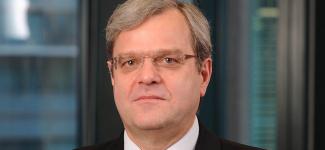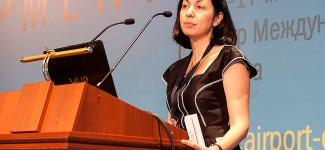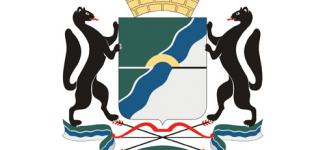Home › Projects › White Book › Integrated mobility for METR region
Integrated mobility for METR region

Dr. Jochen Eickholt, CEO Rail Systems, Siemens AG, describes technical solutions for urban transport to be more efficient and environmentally friendly.
In worldwide efforts to optimize the use of our planet’s finite resources and to protect the environment and climate, sustainability has become a key goal. One of the primary targets here is to reduce harmful greenhouse gases, particularly in the large urban centers that now are home to over half of the global population. Today, cities account for around 80 percent of the world’s economic output, and drive an even higher share of global growth. Rail transport should be given priority, since it substantially helps cut transport-related carbon emissions.
However, in a globalized economy, with businesses and workforces increasingly able to relocate internationally, cities must compete to offer the most attractive environment for economic activities. Efficient transport can attract business and industry to cities, boost productivity by improving connectivity, reduce time lost to travel, and improve the quality of urban life. And ultimately, making a city more attractive to live in helps provide business with the labor force to create its products and buyers to consume them, and so fuels economic growth.
A recent study commissioned by Siemens shows that cities that invest in transport will reduce economic costs and drive growth. And the potential impact from such investments is clear: the cost of transport falls and growth accelerates. Extrapolating this fact to all relevant cities globally suggests an economic opportunity of around $800 billion per year by 2030 – equivalent to nearly 1 percent of global GDP – together with further social and environmental benefits.
Given such perspectives, it is obvious that current mobility development strategies in Russia, Turkey and the Middle East focusing on urban transport and railway development programs will not only further stimulate economic growth in these regions but also ensure that this growth is more environmentally compatible. Growth and environmental responsibility can go hand in hand.
In order to leverage the potential offered by integrated and efficient transport modes, Siemens develops solutions based on energy-saving, sustainable technologies. In each of transport modes, Siemens combines stylish and comfortable mobility with optimized energy efficiency and maximum environmental compatibility.
In a project for Riyadh, Saudi Arabia, Siemens uses lightweight construction methods and modern traction technology to achieve a marked decrease in energy consumption. Both the car body and its interior were designed for optimal reusability, and have a recycling rate of over 95 percent.
Fully integrated Siemens concepts are custom designed to help cities reduce their environmental burdens and make urban life more attractive as well as more competitive. In London, for example, Siemens delivered over 1,200 cars for regional trains and the Heathrow Airport Express – to optimize rail connections with the city. The company also provided a city road congestion toll system that encourages commuters to shift to the improved and cleaner rail system. Siemens also supplied a satellite-based bus tracking system with real-time passenger info. This package of solutions has reduced street traffic in London City by around 20 percent and cut carbon emissions by 150,000 tons a year. Since their implementation, inner-city traffic flows have been accelerated by 37 percent and commute times have been shortened by 17 percent on average.
Beyond all innovations in rolling stock and rail automation, on the long run efficient transport and sustainability together can only be balanced by intelligent networking of all transportation services. It is only rarely possible to meet the growing demand for transportation capacity by building new roads or railroad lines. Innovative traffic concepts are preferred that tilt the modal split toward environmentally friendly rail transport and simultaneously offer an intelligent interface with road transport. An essential component to achieve the modal shift is an Automated Fare Collection (AFC) system – based on electronic ticketing (eTicketing).
Electronic tickets can be used across all modes of transport and offer additional functionality. Passengers can flexibly change between different modes of transport without losing time in purchasing individual tickets and selecting the correct fare. Siemens therefore offers modular eTicketing solutions for multi-modal trips. One approach is the Siemens-developed smartcard, designed in credit-card format with one active and one passive RFID (radio-frequency identification) chip. This makes it basically possible to use one card for different means of transport, with interoperability between different transit companies and tariff consortiums, as well as connected service providers. It will, for example, be possible to use it also for chargeable parking spaces or to hire cars.
The Siemens smartcard offers dual functionality which enables the usage for both CiCo and BiBo access control systems. Following the “Check-in/Check-out” (CiCo) principle, the passenger actively taps in and out with the smartcard (or smartphone) at the beginning and end of each journey, by holding the card to a terminal reader for the access control system when entering and leaving. With the “Be-in/Be-out” (BiBo) principle, the smartcard (or smartphone) is automatically logged at intervals during the journey, without actively having to use the reader. Because of the contactless automatic registration, the smartcard doesn't even need to be visible, so it can be carried in a pocket, purse or jacket. The actual journey of a BiBo passenger is determined afterwards, with a best tariff guarantee. This innovation was honored at the Transport Ticketing Conference in London, with the MasterCard Transport Ticketing Award 2013 in the category "Ticketing technology of the year”. Siemens ticketing solutions based on mobile and smart phones complement the card based approach.
In order to further leverage networked mobility, Siemens currently develops an Integrated Mobility Platform (IMP) that enriches ticketing with additional functionalities for information, route planning, reservation and navigation. The Integrated Mobility Platform is built to achieve the most comprehensive possible networking of transportation users, mobility providers and urban traffic management centers.
Designed as a B2B platform it enables operators to integrate complementary mobility services into their own portfolio. A car-sharing company could, for example, bundle its mobility services with those of a rail operator via the IT-platform. From this will emerge bundled mobility offerings which simplify the planning, booking and billing of multimodal travel from door-to-door. In a trial „Open Mobility Berlin“ Siemens has already implemented interfaces to many providers across transportation modes.
Beyond technical implementation there are challenges towards integrated mobility, mostly legal and commercial: terms of use need to be harmonized, tariff models aligned, contracts ideally standardized. As such the business model between the platform operator and the providers of mobility services is a critical success factor.
Meanwhile, the platform offers additional benefit which increases with more service providers integrated. As such, the IMP may evolve as a true marketplace, enabling various multimodal packages. With the set-up as a scalable B2B platform with flexible interfaces, the IMP is a base which does not only enable easy integration of new providers but also a streamlined management of partners and interfaces along operations. Although travelers would experience most value-add with a multinational platform being accessed from one single user interface, it is expected, that platforms will first be built on a regional and national level, setting the base for an international integration later on. This is also under consideration of regional standards, established co-operations – and time to market. Ongoing EU initiatives and projects also elaborate on this development.
After all, all parties may benefit from integrated solutions: Through provision of access to an Integrated Mobility Platform mobility providers like rail operators can make their transportation services more appealing, helping to break down access barriers towards the use of public transport, increase ridership with existing and new customers and thus boost sales revenue. The Integrated Mobility Platform may also serve as a valuable source of information about passenger figures, preferred travel times and routes. This detailed information can be used to optimize fleet deployment and may provide new options in fare pricing. For passengers, an Integrated Mobility Platform enables easy and multi-modal travel, transparent travel information in real time and, thanks to the cooperation between providers, a wider range of mobility services and customized packages. Cities also benefit from the Integrated Mobility Platform. The promotion of intermodal travel with state-of–the art technologies supports the innovative image of urban areas in the competition between cities and provides a base for more sustainable transport management under consideration of real traveler needs and optimal use of Rail and Road infrastructure.
All in all, there are many opportunities to fuel economic growth in the METR region (Middle East, Europe, Turkey and Russia) by improving mobility systems, particularly rail transport. At the same time, energy-efficient rail systems are ideally suited for moving passengers in and between cities comfortably and quickly while reducing emissions. In short: innovative mobility solutions not only create opportunities for growth, but also make growth more sustainable.
http://www.kommersant.ru/doc/2535002
Sign up for MIR initiative email updates
Sign up to receive monthly notifications about new arctiles published and other events on your email.
Other articles
 Thomas Maier
Thomas Maier
Transport infrastructure investments
 Olga Revzina
Olga Revzina
Legal aspects of international transport related infrastructure projects in the METR Region
 Vladimir Yakunin
Vladimir Yakunin
The Geopolitics of Transportation
 Anatoliy Lokot
Anatoliy Lokot
Enhancement of Mobility Quality in Novosibirsk and Integration into the International Network of Transport Corridors
 Pablo Vazquez Vega
Pablo Vazquez Vega
Assessment of infrastructure projects
 Jean-Pierre Loubinoux
Jean-Pierre Loubinoux
